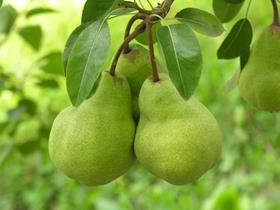
More than 130 participants from across thr globe gathered on 16-18 November in Paarl, South Africa for the ninth edition of Interpera, the International Pear Congress.
Industry representatives were drawn from Belgium, Spain, France, Italy, New Zealand and the US.
The event was co-organised by AREFLH and Hortgro, with technical visits arranged by Ceres Fruit Growers, Fruitly Africa and Wolseley Fruit Packers.
The two-days conference was devoted to varietal innovation, which has been much more active over the past ten years with a clear trend towards red varieties, and the evolution of world production, which is constantly increasing.
Indeed, global production has risen from 15m tonnes in 2002 to 25m tonnes in 2014. China is by far the main producer with 18m tonnes followed by the European Union (2.4m tonnes) and Argentina (850,000 tonnes).
Major market trends are driven by the Russian ban and the subsequent market repositioning that followed, to countries such as the Middle East, Asia, and Africa.
The export of pears was also analysed at the event. China comes first, with 14 per cent going for export (370,000 tonnes), followed by Argentina (12 per cent, 340,000 tonnes), Belgium (11 per cent), the Netherlands (11 per cent) and South Africa (8 per cent).
Two days of field visits allowed the participants to know the local pear production better. In 2015 the production occupied an area of 12,700ha for a production of 410,000 tonnes of fruit.
In South Africa, Packams Triumph is grown on an area of 4,300ha (34 per cent of the total production), followed by Forelle (3,300ha, 26 per cent), Williams Bon Chrétien (2,200ha, 20 per cent) and Abate Fetel (810ha, 6 per cent).
South Africa agriculture has many advantages, including low parasitic pressure, an abundant labour force, low wages and very competitive production costs. This explains its strong exporting capacity. Its main markets for pears are Europe (43 per cent), the Middle East (20 per cent), Asia (18 per cent), Russia (5 per cent) and Africa (6 per cent).



